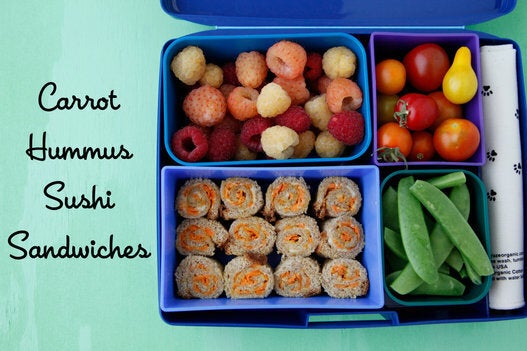
Meal prep is the practice of preparing a week's worth of meals (usually lunch or dinner or both!) in advance. Health food blogs and Instagram feeds have been buzzing about this trend, sharing tips and advice for creating the ultimate meal prep menus.
But how many of these tips are actually accurate? And how many of them are misconceptions?
We asked registered dietitian Annie Hoang to set the record straight, and help us separate the meal prep facts from fiction.
Myth #1: Eat protein and lots of it!
When you think about what to cook for lunch or dinner, the first thing your mind probably wanders to is protein -- "we're having chicken" or "we're having steak."
Protein is the part of a meal rarely forgotten, and is most usually the star of the dish. But really, there is so much more to a meal than protein.
In fact, protein should only be 25 per cent of your plate. Another 25 per cent should be starches. And the other 50 per cent? Wholesome, delicious, (yet usually forgotten) vegetables!
While this 25-25-50 rule is a good one to follow, be critical when doing so. Choose high-quality proteins and starches, like lean meats and whole grains, over lower quality options (bacon and white pasta, for example).
Pro tip: All vegetables are high quality, so enjoy a variety of vegetables. They can be fresh, frozen or canned.
Myth #2: If I don't meal prep I won't eat healthy
Don't feel the need to have all of your lunches prepared for an entire week.
Some people work well doing so, and others do well preparing their meals for three to four days out of a week and that's perfectly fine.
As long as you stock up your fridge and pantry with healthy options, you can whip up quick, healthy meals instead of prepping days in advance.
So feel free to whip up a last-minute lunch in the evening, or to pack leftover dinner for lunch, too. As long as you are remembering to include your veggies, you're golden.
Myth #3: Meal prep is all about strict, clean eating
It's easy to become consumed with the strict healthy eating regimen that comes with meal prep -- I mean, a quick #mealprep search on social media and hundreds of chicken-veggie-sweet-potato combos flood your feed.
It almost makes you feel bad if you don't follow the same, strict, no-treats routine.
But research shows that keeping a regimented, health food only diet just doesn't work. People want variety -- to enjoy the tastes of different foods -- it's a part of how we're wired.
So when you're prepping your meals, be sure to plan for fun, luxurious foods too, and include them in your meals a couple times per month.
Love hollandaise sauce? Pour some on your eggs. Have a sweet tooth? Pack a couple squares of chocolate with your almonds.
Hoang suggests aiming for the 80/20 rule: 80 per cent healthy, nutritious foods to nourish your body, and 20 per cent fun foods to maintain the pleasure in eating.
By including these treats in our prepared meals, we're giving our bodies permission to enjoy food, instead of depriving ourselves from it.
So go ahead and plan for little treats in your prepared meals -- enjoyed in moderation, of course!
Co-authored by Jessica Lepore, Junior Digital Communications Specialist at Sunnybrook.
Keep up with health tips & information from Sunnybrook experts at health.sunnybrook.ca
MORE ON HUFFPOST:
